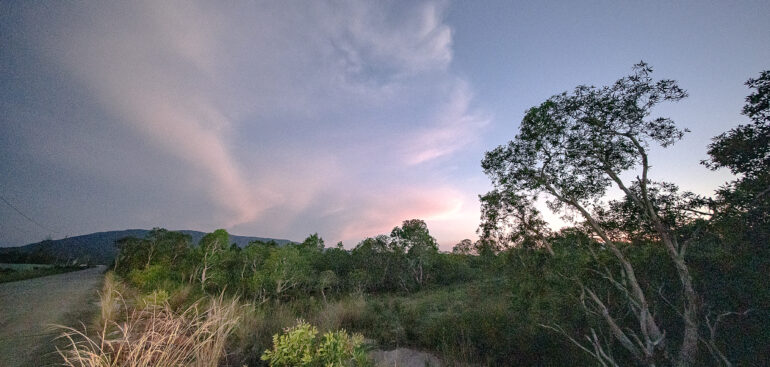
Phu Quoc National Park (belongs to Kien Giang Biosphere Reserve) – Author Tang A Pau
Kien Giang Biosphere Reserve was recognized on October 27, 2006, total area: 1,188,105 hectares with 36,935 hectares of core area, 172,578 hectares of buffer zone and 978,591 hectares of transition area. Kien Giang Biosphere Reserve includes: U Minh Thuong area, area of 148,758 hectares; Phu Quoc area, area 304,933 hectares; Kien Luong-Kien Hai-Ha Tien area, area 734,415 hectares.
The national park (U Minh Thuong National Park) is Vietnam’s remaining peat swamp forest area. Phu Quoc National Park includes the remaining forests of Dipterocarpus, Melaleuca and mangrove forests, important seagrass beds and coral reefs. Kien Giang has 200km of coastline with rich mangrove forests. Mangrove belts play an important role in minimizing the effects of rising water levels due to climate change.
The Biosphere Reserve has 6 main ecosystems and 22 different habitats, with high biodiversity value including 1,500 species of vascular plants, 77 species of mammals, 222 species of birds, 107 species of reptiles and amphibians. With 700 hectares of coral including 87 species and 12,000 hectares of seagrass beds, including 10 species of grass that are food for rare and threatened species of turtles and dugongs.

Plants in Phu Quoc National Park – Author Tang A Pau
Kien Giang Biosphere Reserve is not only diverse in habitat and terrain, but its cultural heritage is also very rich and diverse with 43 cultural and historical relics and landscapes recognized at the national and provincial levels. Every year, 389 festivals take place in the province with 91 folk festivals, 235 religious festivals, 62 revolutionary historical festivals and 01 other festival of both Kinh, Khmer and Chinese people. In addition to promoting the development of eco-tourism combined with cultural tourism to effectively exploit the province’s potential and strengths. In recent years, Kien Giang province has also paid great attention to preserving and promoting the value of local traditional craft villages. In particular, when tourists visit the bamboo weaving village in Phu My commune, Giang Thanh district, with a rich source of almond grass materials to create products such as mattresses, bags, household appliances, etc. Up to now, Products made from almond grass have been exported to countries and territories such as Japan, Hong Kong, Canada, USA, Italy, Australia, Switzerland, Chile, Germany and France. This is the Phu My Eagle Grassland Conservation project area of Kien Giang province, supported by the International Crane Association with the goal of effectively and sustainably conserving almond grassland. This place has been known by many countries around the world for its low investment project, but combines both conservation and development, while preserving the unique cultural identity of the local people. creating jobs to increase income for people in the Khmer ethnic region, besides there are many delegations including scientists, businesses interested in the environment and students of many domestic universities. and international visitors came to Phu My to see red-crowned cranes and visit traditional Khmer craft villages. This will be a favorable premise for tourism development programs and access to investors in Kien Giang province in particular and the entire Mekong Delta region.
Source: Department of Natural Resources and Biodiversity



